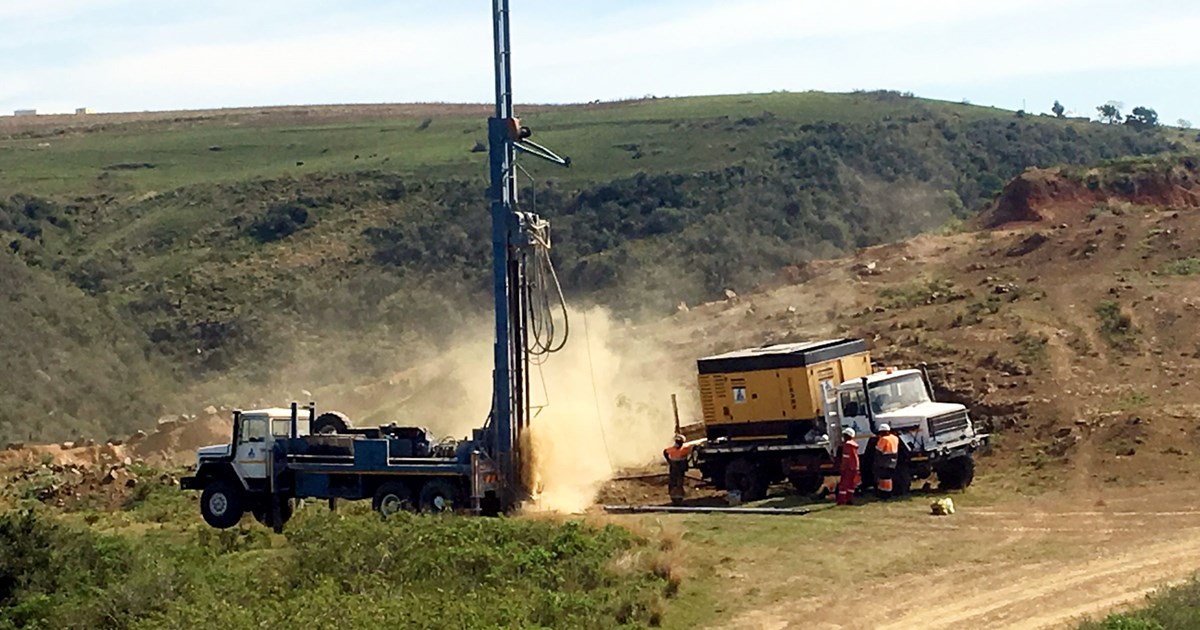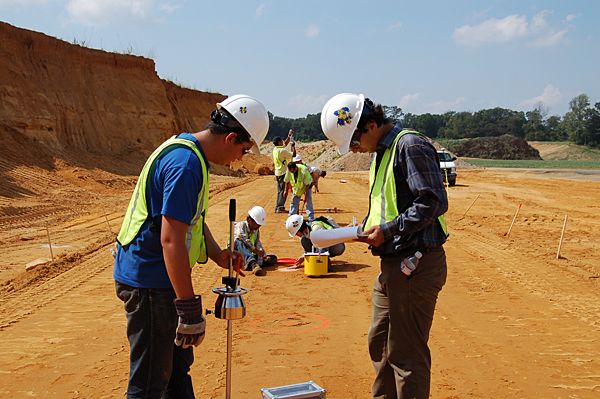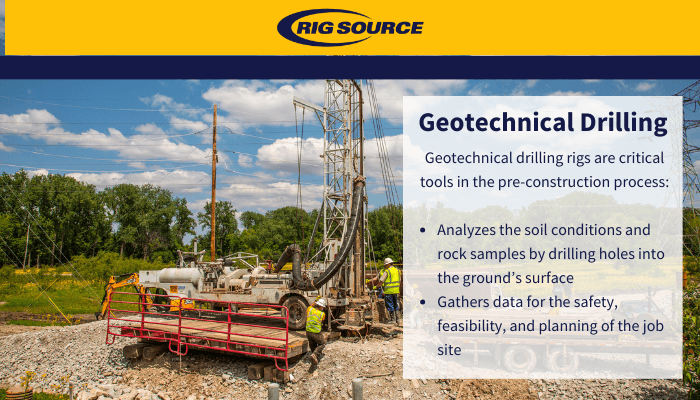Discovering the Function of a Geotechnical Engineer Description and Responsibilities
Discovering the Function of a Geotechnical Engineer Description and Responsibilities
Blog Article
The Importance of Geotechnical Design in Addressing Ecological Obstacles and Enhancing Construction Safety And Security
Geotechnical engineering works as a cornerstone in the crossway of environmental stewardship and building security, offering critical understandings right into the behavior of soil and rock under various conditions. This discipline not just addresses pushing environmental obstacles such as dirt erosion and groundwater defense yet additionally improves the robustness of infrastructure against all-natural hazards. By applying calculated website investigations and customized reduction actions, geotechnical engineers play a crucial duty in guarding both human lives and eco-friendly stability. The complexities of these obstacles raise vital inquiries concerning the future direction of this field and its implications for sustainable advancement.

Duty of Geotechnical Design
Geotechnical engineering plays an important function in the design and building and construction of facilities by attending to the behavior of soil and rock materials under various conditions. This field of design is important for recognizing the communication in between structures and the ground, that includes establishing the load-bearing ability of dirt, analyzing stability, and forecasting possible settlement or failure.
Geotechnical engineers are in charge of performing site examinations, which include sampling and testing dirt and rock to collect information on their physical and chemical buildings. This details is crucial for designing structures, maintaining wall surfaces, and various other earth-retaining frameworks that guarantee safety and security and long life. Furthermore, geotechnical engineering educates the selection of ideal building approaches and products, therefore minimizing risks related to dirt behavior.
Furthermore, the combination of geotechnical engineering principles right into metropolitan preparation and environmental administration is essential for attending to challenges such as ground contamination and groundwater management. By understanding geotechnical factors, designers can develop sustainable options that enhance the durability of infrastructure against all-natural hazards, while likewise advertising environmental stewardship. Inevitably, the role of geotechnical design is vital for attaining risk-free, durable, and eco aware building practices.
Dirt Disintegration Reduction
Dirt erosion presents a substantial hazard to both ecological stability and infrastructure integrity, affecting about 24 billion lots of fertile soil lost yearly worldwide. This sensation is worsened by aspects such as deforestation, urbanization, and bad farming methods. Geotechnical design plays a pivotal duty in establishing efficient dirt disintegration reduction techniques that safeguard both the environment and building projects.
One strategy requires the implementation of erosion control techniques such as plants planting, which stabilizes soil with root systems. Additionally, the building and construction of maintaining terraces and wall surfaces can properly minimize surface runoff and shield susceptible areas from disintegration. Correct water drainage style is likewise vital; it lessens water buildup and routes excess runoff far from essential structures.
Additionally, geotechnical engineers utilize soil stablizing techniques, such as the application of geotextiles and eco-friendly floor coverings, to enhance dirt cohesion and stop destruction - geotechnical engineer description. Regular monitoring and analysis of erosion-prone sites make it possible for prompt treatments, ensuring lasting sustainability. By integrating these approaches, geotechnical design not only alleviates the impacts of soil erosion but also adds to the strength of framework versus ecological challenges, inevitably promoting a much safer and a lot more lasting developed atmosphere
Groundwater Protection Strategies
Groundwater acts as an essential resource for alcohol consumption water, farming, and industrial procedures, making its security essential for environmental sustainability and public health and wellness. Efficient groundwater defense strategies are crucial in minimizing contamination risks and ensuring the long life of this resource.

Normal monitoring of groundwater top quality is likewise essential, allowing early detection of contamination resources and helping with prompt try this remediation initiatives. Using innovative modern technologies, such as geophysical studies and remote noticing, aids in recognizing possible hazards to groundwater gets.
In addition, public education and learning and stakeholder interaction are vital, cultivating neighborhood assistance for groundwater security campaigns. geotechnical specialist. By combining regulatory procedures, technical improvements, and community involvement, we can create a comprehensive structure that safeguards groundwater resources while promoting lasting development and construction practices
Landslide Danger Administration
Landslides pose significant dangers to both human safety and security and framework, making effective danger administration methods necessary. Geotechnical engineering plays an essential duty in determining, analyzing, and mitigating landslide threats. A detailed understanding of slope stability, dirt mechanics, and hydrology is vital for creating efficient danger monitoring plans.
The first step in landslide danger administration involves complete site examinations, which consist of geological mapping and dirt testing. These investigations assist engineers review the potential for landslides by determining critical variables such as slope angles, dirt structure, and water material. Utilizing innovative modern technologies such as remote picking up and geophysical studies can browse around these guys boost the accuracy of these assessments.
Once dangers are recognized, appropriate reduction steps can be applied. These may include design remedies such as retaining wall surfaces, water drainage systems, and slope stablizing strategies. Furthermore, keeping track of systems must be established to find indicators of ground movement and adjustments in water levels, enabling proactive interventions.

Enhancing Construction Safety
Building and construction sites often offer a myriad of hazards that can jeopardize employee security and job integrity. Geotechnical design plays a crucial role in improving building and construction safety and security by supplying crucial insights right into subsurface conditions. With comprehensive soil and rock evaluation, geotechnical engineers can determine possible dangers, such as soil instability, groundwater concerns, and seismic vulnerabilities, which may endanger the safety of construction tasks.
Carrying more info here out geotechnical solutions, such as appropriate foundation layout and using retaining frameworks, reduces these threats significantly. These remedies not just guarantee the stability of the frameworks being built but likewise produce a more secure working atmosphere for construction employees. Additionally, rigorous tracking and evaluation of website problems throughout the building and construction procedure are crucial. Making use of sophisticated innovations like ground-penetrating radar and inclinometer systems allows real-time information collection, permitting timely treatments when dangers are spotted.
Additionally, cultivating a culture of security with training and adherence to established safety protocols even more enhances building and construction site safety and security. By integrating geotechnical know-how right into the preparation and execution stages, building and construction tasks can achieve greater safety criteria, eventually safeguarding employees and ensuring successful job completion.
Final Thought
In verdict, geotechnical design serves as an essential self-control in tackling environmental difficulties and advertising building security. Through effective soil erosion reduction, groundwater security techniques, and landslide risk monitoring, geotechnical designers add to the growth of resistant infrastructure.
Geotechnical design offers as a cornerstone in the intersection of ecological stewardship and building and construction security, providing vital understandings right into the behavior of dirt and rock under various conditions. Geotechnical engineering informs the choice of proper building approaches and products, thereby decreasing threats connected with soil habits.
Geotechnical design plays a crucial role in establishing reliable soil disintegration mitigation techniques that safeguard both the setting and construction jobs.
Furthermore, geotechnical designers employ dirt stablizing strategies, such as the application of geotextiles and eco-friendly floor coverings, to improve dirt cohesion and protect against destruction. With extensive dirt and rock evaluation, geotechnical designers can determine potential risks, such as dirt instability, groundwater concerns, and seismic vulnerabilities, which might compromise the safety and security of building and construction activities.
Report this page